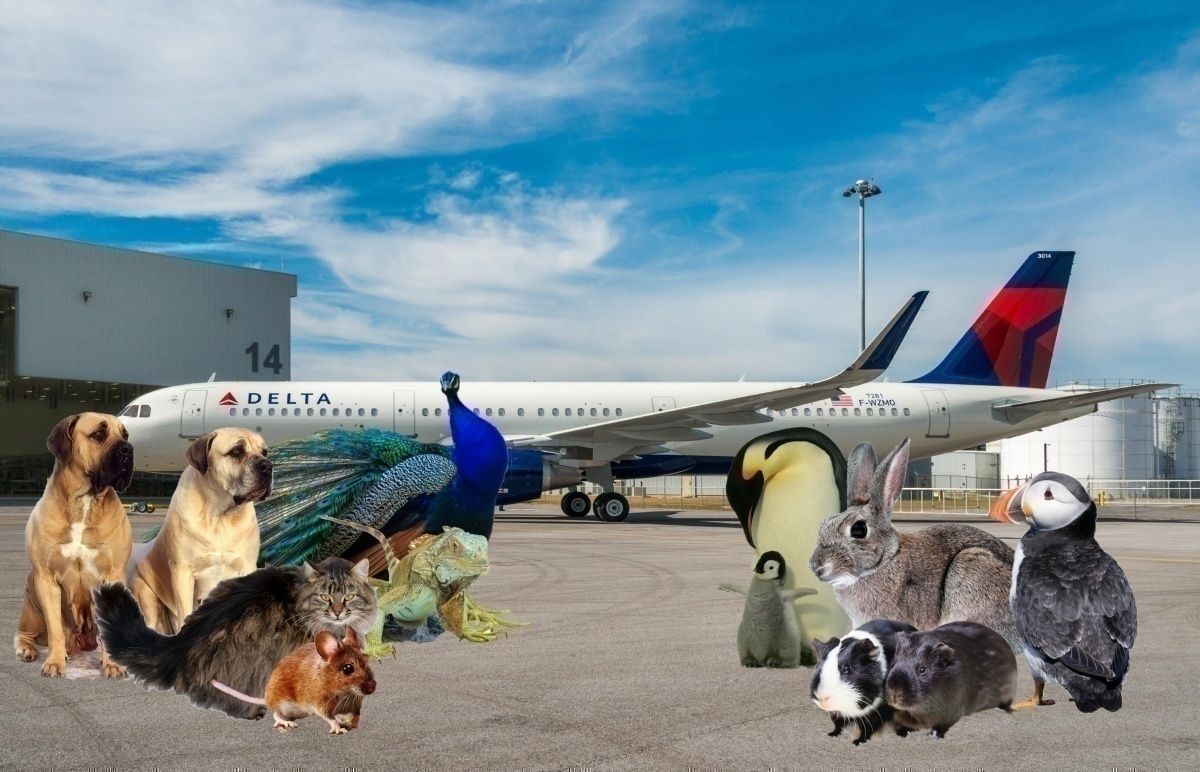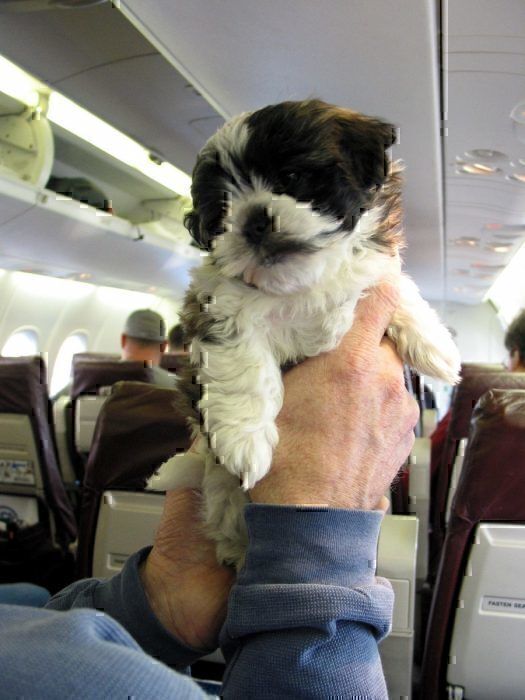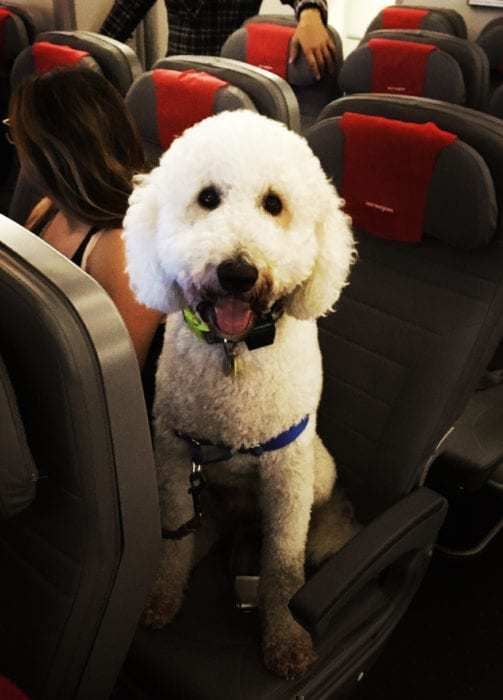The Department of Transportation has proposed a ban on emotional support animals being allowed to fly. This follows a surge in the numbers of untrained animals boarding flights, and more incidents involving these animals too.
What does the DoT propose?
The rule, as reported by the Wall Street Journal, proposes to continue allowing real, trained service animals on board flights. These are animals such as guide dogs and trained assistance dogs, used by people with disabilities to get through everyday life. It would not, however, allow emotional support animals to fly.
The proposal also details new scope for airlines to create their own rules around taking animals on board. This could include things like people with service animals checking in early, having a maximum number of animals allowed on board or having animals able to fit in the footwell of the seat.
Under the proposed rules, airlines would be given far more freedom to decide whether an animal is fit to fly. The early check-in rule could be leveraged in order to give staff the time to assess whether the animal is a good fit, and to make a decision on allowing it on board.
However, airlines would no longer be allowed to discriminate based on the breed of the animal, preventing stranding such as occurred with a Delta passenger and his pit bull-type dog previously.
Are emotional support animals a problem?
In short, yes. Emotional support animals are starting to become quite a concern on US flights. The Washington Post reports that more than 751,000 ESAs flew on commercial flights in 2017. Delta Air Lines alone flew some 250,000 that year, up 150,000 from the year before. Overall, 74% more ESAs flew in 2017 than did the year before.
Figures for 2018 and 2019 are sparse, but reports indicate airlines have seen similar levels of growth. The Chicago Tribune estimates that 2018 saw the number of pets flown exceeding the 1m mark. While the notion of having animals in the cabin is not a problem in itself, the behavior of these often untrained pets has caused a number of issues.
In the past 12 months alone, we’ve reported on dog attacks on board flights, both to other passengers and to flight attendants. Huge dogs in business class drooling over other passengers’ meals is never a good thing, and we’re pretty sure miniature horses don’t fit very well in the footwell under a seat.
The Association of Flight Attendants has issued a statement in support of the ban of ESAs on board. They stated,
"Passengers claiming pets as emotional support animals has threatened the safety and health of passengers and crews in recent years while this practice skyrocketed. Untrained pets should never roam free in the aircraft cabin. Flight Attendants have been hurt and safety has been compromised by untrained animals loose in the cabin.
"The days of Noah’s Ark in the air are hopefully coming to an end.”
While not being able to fly pets in the cabin will likely sting for those owners with perfectly well-behaved pets, this has to come down to a case of the bad conduct of a few hurting the freedom of many. While many animals may be perfectly behaved on a plane, the fact that a handful haven’t been, and that this has jeopardized the safety of the flight, clearly needs to be addressed.
The DoT proposal is open for public consultation for the next 60 days. After that, the DoT will review comments and will propose a final policy. No date has yet been given for the implementation of the policy.
How do you feel about the impending ban of ESAs on board flights? Fair, or unfair? Let us know in the comments.




